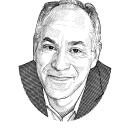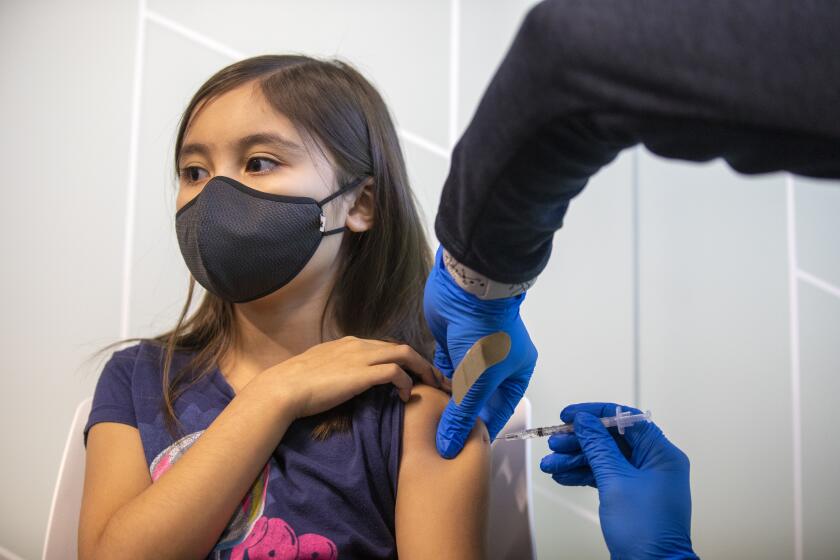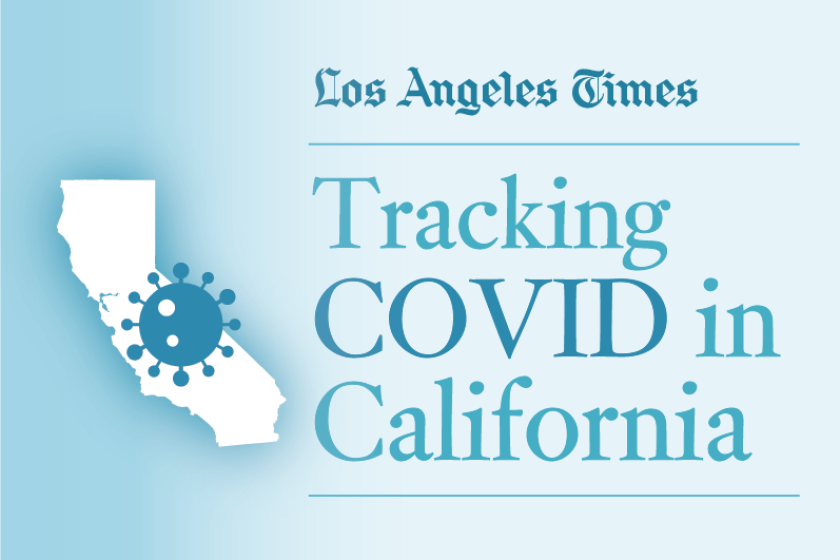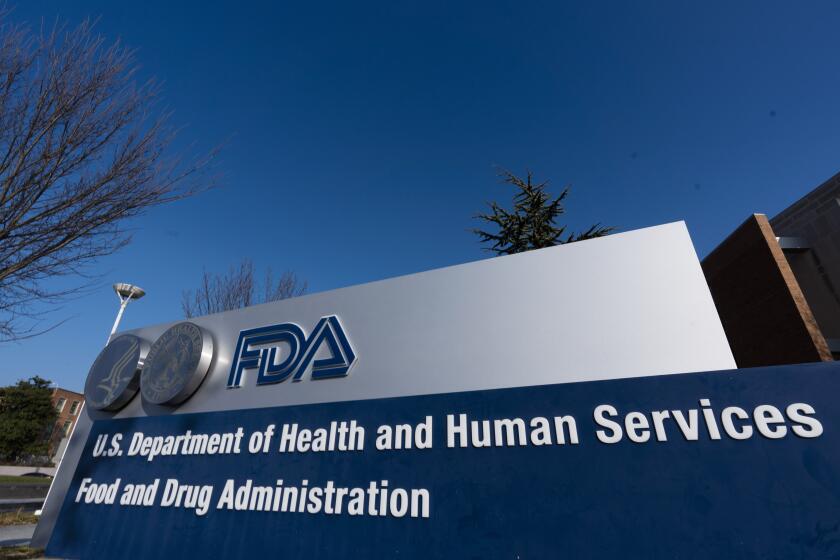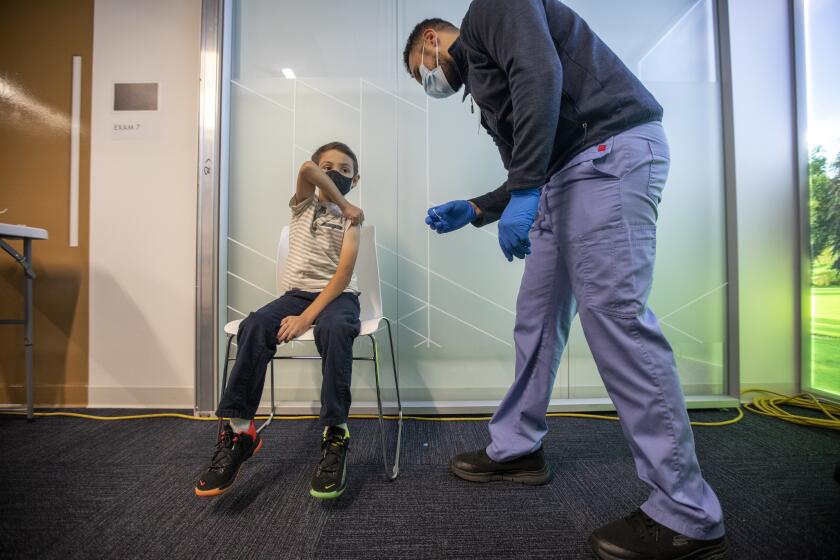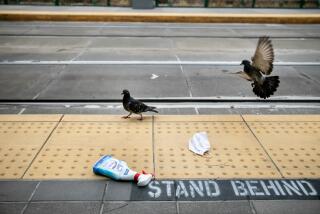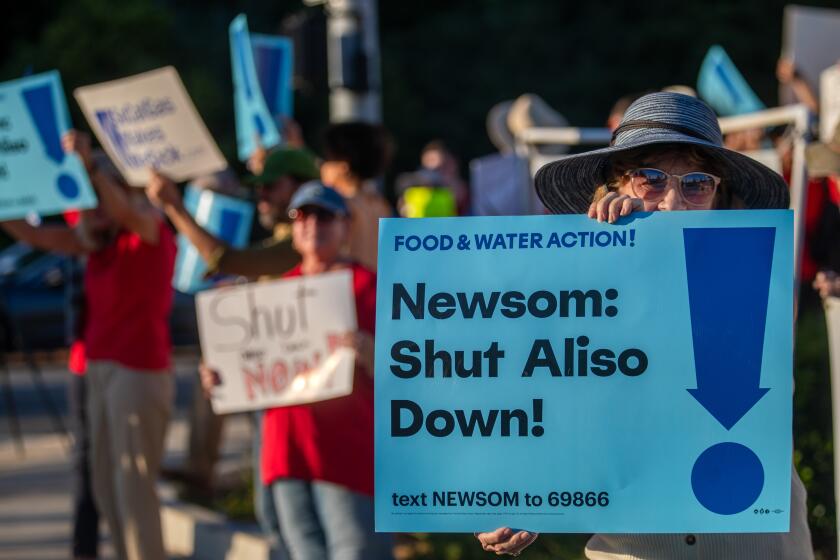Column: We weren’t supposed to get anywhere near 1 million COVID deaths in the U.S. Then we did
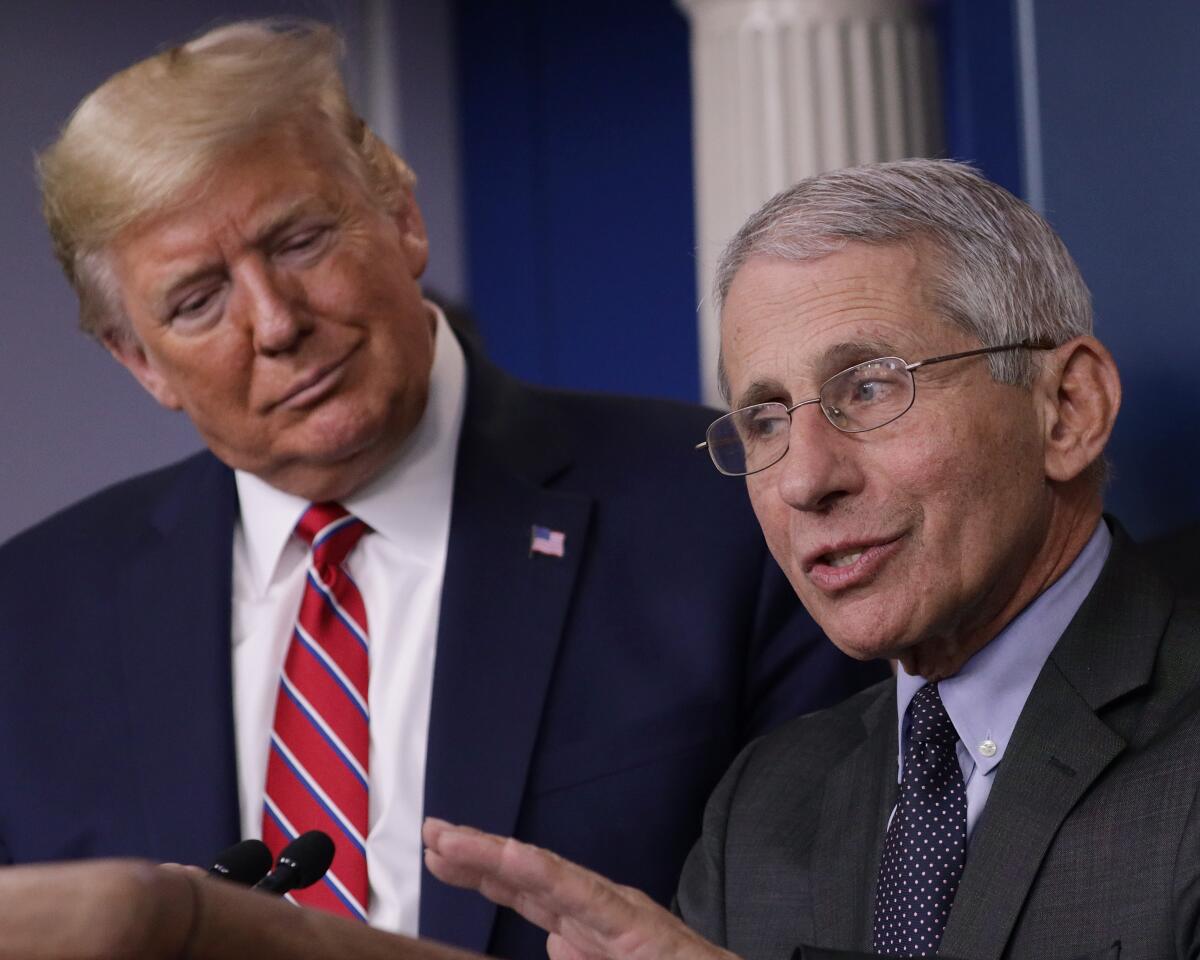
At the start of the pandemic, in late March 2020, President Trump held a White House briefing at which his top advisors presented their official COVID-19 death projections. In somber tones, they forecasted that between 100,000 and 240,000 Americans would die from the disease if we followed reasonable social-distancing and other mitigation guidelines.
Two hundred and forty thousand! That was an inconceivable amount of death. Four times the number of Americans who died in Vietnam. Eighty times the number who died in the 9/11 attacks.
“As sobering a number as that is, we should be prepared for it,” said Dr. Anthony Fauci, the nation’s leading infectious disease expert. Trump added that there was “light at the end of the tunnel” if we behaved as we should, but that “we’re going to go through a very tough two weeks.”
Opinion Columnist
Nicholas Goldberg
Nicholas Goldberg served 11 years as editor of the editorial page and is a former editor of the Op-Ed page and Sunday Opinion section.
Today, two years later, we all know how that worked out. We didn’t behave as we should. We didn’t see the light after two weeks. And we didn’t have 100,000 deaths, or 240,000 deaths either.
Instead, we’re now closing in on 1 million deaths. As of Sunday, total U.S. COVID deaths were at 986,000, according to the Centers for Disease Control and Prevention, with 400 more Americans dying each day.
Our cumulative national death rate of more than 200 deaths per 100,000 people is higher than that of any other large, wealthy, industrialized nation.
Yes, there are some positive signs. We have vaccines. We have boosters. Hospitalizations and deaths are way down from their peak.
Despite months of outreach and on-the-ground efforts, the COVID-19 vaccination campaign for young children remains stuck in neutral — prompting experts to say more needs to be done to inform parents about the benefits of inoculation.
But this virus doesn’t appear to be done with us. In the U.S. and abroad, new variants are still emerging. Delta has receded and Omicron is well past the high point it reached in mid-January, but here come subvariants XE, BA.2, BA.2.12 and BA.2.12.1. In California, COVID case numbers are creeping back up, in part due to the relaxation of indoor masking rules and vaccination-verification requirements.
Worst of all, we continue to fight among ourselves about masking requirements, about whether to open up or shut down, about how to protect our schoolchildren, about the benefits of immunization. Untruths continue to pervade social media. Science and health remain senselessly politicized.
Admittedly, this is a confusing moment. The danger has lessened. And by now, even liberal Democrats who hate Trump, revere Fauci and uncomplainingly followed all the mitigation rules are very sick of hiding out from this disease. We all want our lives back.
So we tell ourselves there’s a level of ongoing death we can live with. That COVID is like the flu — endemic, not pandemic. That we’re vaxxed, and better yet boosted, and therefore we’re kind of, sort of, invulnerable.
But eager as we may be for this to be over, now is a time to move slowly and avoid complacency. For one thing, only 66% of the country is fully vaccinated; only 45% has received even one booster. (In L.A. County alone, there are some 1.7 million people over age 5 who haven’t received even a single shot.) For another, as long as the virus is raging anywhere, the possibility of new, more dangerous mutations remains real.
If we’re careful, perhaps we can slow the process and keep 1 million from becoming 2 million.
It’s hard for humans to put such a large number of deaths into meaningful perspective. Paul Slovic of the University of Oregon argues that people suffer from “psychic numbing,” in which both our comprehension and our empathy declines as death tolls rise. That’s an academic’s restatement of the line often attributed to Josef Stalin: “One death is a tragedy. A million deaths is a statistic.”
But let me try to offer some context.
Heart disease killed nearly 700,000 Americans in 2020 and cancer killed just over 602,000, suggesting that over the last two years they probably each killed more people than COVID did.
COVID in 2020 was the third-leading cause of death in the U.S. In 2020, more people died of COVID than of Alzheimer’s disease, diabetes, flu and pneumonia combined.
The test, which can provide results in less than three minutes, must be carried out under the supervision of a licensed healthcare provider.
Not only is 1 million more people than died in the Vietnam War, Pearl Harbor and 9/11, but it’s more than the estimated 750,000 who died in the four years of the Civil War, a bloody conflict that permanently scarred the United States.
In 2020, 38,824 people died in traffic accidents, according to the National Highway Traffic Safety Administration.
About 675,000 Americans died in the flu epidemic of 1918, according to the CDC. (An estimated 50 million people died around the world.)
What Slovic would no doubt want us to remember (and Stalin might want us to forget) is that each of those million COVID deaths represents a real person, with a real life brought to an early end. Furthermore, one study showed that for every person who dies of COVID, nine bereaved family members are left behind.
At this point, many of us know someone who has died of this awful disease. The statistics show that about 75% of the dead are over age 65. Those who have died are also disproportionately immunocompromised or unvaccinated. Disproportionately Black. Disproportionately working-class.
Some 200,000 American children are estimated to have lost one or both parents to the disease, according to data gathered at Imperial College London.
Here are some tips to stay safer during spring break, the Easter holidays and the Coachella Valley Music and Arts Festival.
Oh, and I forgot to mention: The 1 million deaths? That’s likely an undercount.
So how will these years be remembered in the future when or if we come out the other end? A blip? A world-historic catastrophe? Will we remember how we stayed home, how it pitted us against each other, how we failed so terribly to protect ourselves?
The COVID years may resonate in the national memory like 9/11 — or be largely forgotten. We may tell Great Pandemic stories to our grandchildren or maybe by then, pandemics will be a regular part of life.
These days, I’m feeling a little more relaxed — socializing more, eating dinners out, traveling on planes. I’m enjoying the freedom.
But I have a feeling this isn’t over yet.
More to Read
A cure for the common opinion
Get thought-provoking perspectives with our weekly newsletter.
You may occasionally receive promotional content from the Los Angeles Times.
